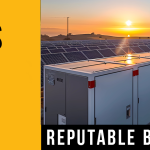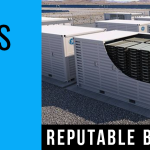 Tesla, it’s been said, is less a car company than a battery company that sells cars. Today, the company is announcing a new milestone: Since 2015, it has installed a worldwide total of a gigawatt-hour of energy storage–technology that is critical for using renewable energy at scale. For comparison, that’s nearly half of the entire amount of energy storage installed globally last year. As the company’s electric car business quickly grows, the energy side of its business is growing even faster.
Tesla, it’s been said, is less a car company than a battery company that sells cars. Today, the company is announcing a new milestone: Since 2015, it has installed a worldwide total of a gigawatt-hour of energy storage–technology that is critical for using renewable energy at scale. For comparison, that’s nearly half of the entire amount of energy storage installed globally last year. As the company’s electric car business quickly grows, the energy side of its business is growing even faster.
“It’s at a scale now where it’s undeniably making an impact,” says JB Straubel, Tesla cofounder and chief technical officer.
The cost of battery storage keeps falling; between 2010 and 2016, the price across the industry fell 73%, from $1,000 a kilowatt-hour to $273 a kilowatt-hour. By 2020, it may drop to $145 a kilowatt-hour, and by 2025, to $69.5 a kilowatt-hour.
The market is growing as renewable energy is also becoming cheaper and expanding. Batteries can be used to store any type of energy–on a grid with traditional fossil fuel plants, the technology can be used, for example, when power demand suddenly peaks on a hot day and thousands of air conditioners turn on (this helps avoid the need to fire up an extra coal or gas plant). But it’s particularly critical for renewables, since batteries make it possible to use solar power at night, or wind power when the wind isn’t blowing.
In Australia, the world’s largest lithium-ion battery, installed by Tesla over an area the size of a football field at a wind farm, is saving consumers millions of dollars by making the grid more reliable. On the Pacific island of Ta’u in American Samoa, a solar microgrid using 60 of Tesla’s large Powerpack batteries has fully replaced diesel power. In Hawaii, Tesla batteries store energy generated during the day at a solar farm on Kauai to release it at night. In Southern California, a Powerpack system handles peak energy demand without requiring extra fossil-fuel-powered plants to come online.
In Puerto Rico, after helping to provide emergency power following Hurricane Maria, Tesla is now installing permanent microgrids. More than 1,000 households on the island, like others around the world, now also use Tesla Powerwalls, the company’s product for home electricity storage, which can be connected to home solar panels to help keep lights on after disasters. Powerwalls can also be connected to each other to form “virtual power plants.” In Australia, for example, Tesla is working with the government on a new plan to distribute solar panels and batteries to 50,000 homes, which will work together to supply clean energy to the grid.





